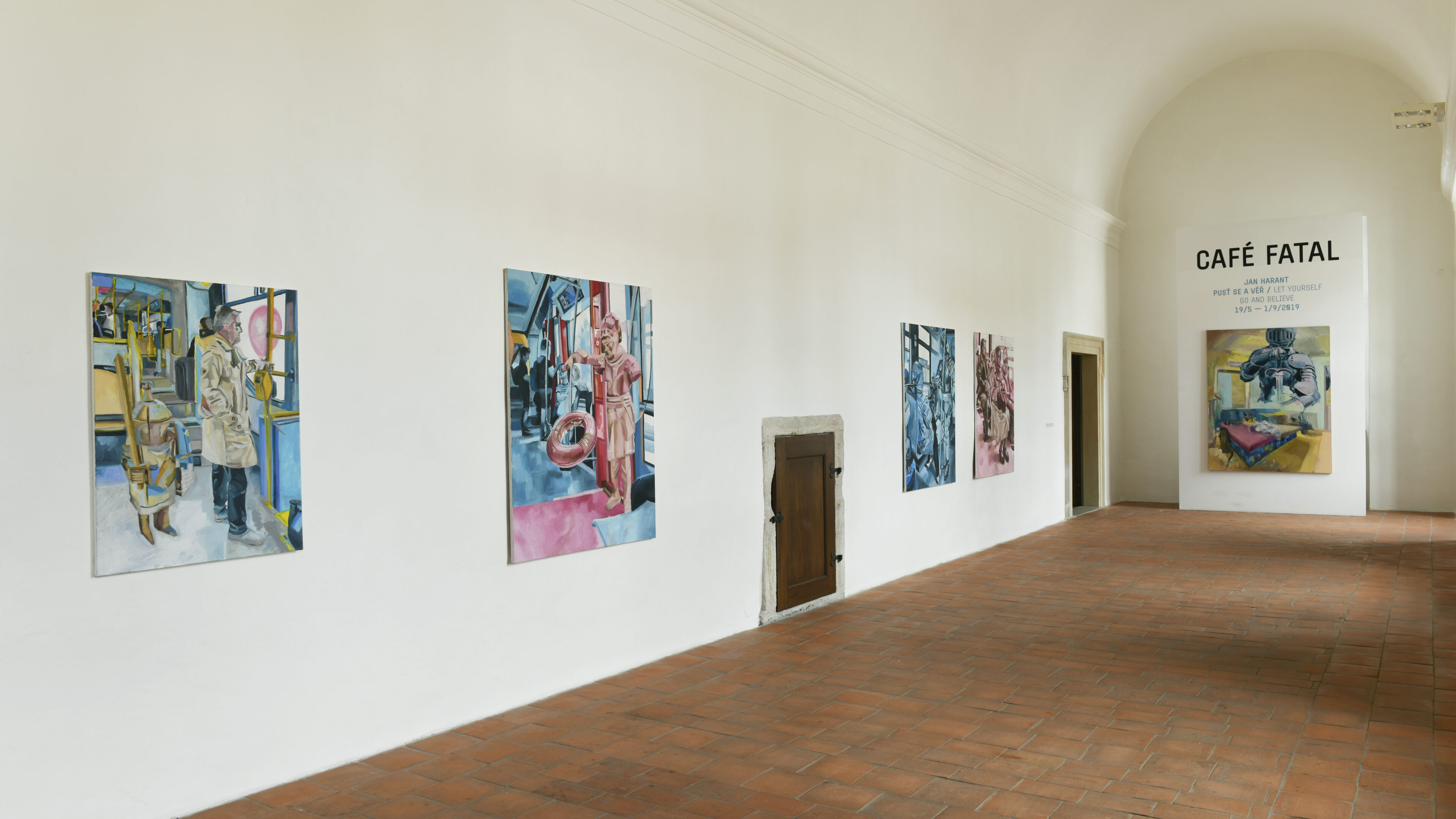Planet Earth moved to the point that only a little bit of the sun was visible. At that moment, I could feel and perceive the contrast.
01. 09. 2019

Planet Earth moved to the point that only a little bit of the sun was visible. At that moment, I could feel and perceive the contrast.
“Planet Earth moved to the point that only a little bit of the sun was visible. At that moment, I could feel and perceive the contrast. Both the open landscape where we can live freely, as well as the suffering of the people, for instance under the roof of the Baumax. I could see both the angry boss as well as the people chatting by the lake. I saw the terrain so clearly that the surface of the planet told me that we can live truly free. At that point, I told myself: Hold on to these thoughts, but also leave some things behind and have faith that, with time, everything will find a balance.”
(Jan Harant)
Jan Harant (1984) is a painter with all his soul. His work is characterized by a typical range of colours that sensitively captures the light, which he uses to model his predominantly figural motifs. Over the course of his painting cycles, his expressive brushstrokes acquire a calmness as he calms his mind and his need to express himself. Harant paints only from personal experience, but we find not only everyday life or things that people can experience. He also depicts inner and intimate moments associated with sickness, a state that showed him places few people ever look at. During his studies under Michael Rittstein at the Academy of Fine Arts in Prague, Harant began working on grand themes related to his former job working at a Baumax home improvement store. This phase in his life is over, and he has moved forward both in his art and in his thinking.
Jan Harant is showing two cycles at GASK. The older one explores the conscious decision to shut oneself off from the world, which he expresses through the symbol of a knight’s armour – which protects but is also very limiting. We can find the image of the knight juxtaposed against everyday traffic or at a session with a therapist. In his most recent, made in 2019, Harant has left the symbol of the knight behind and paints himself while exploring the subject of holding on to things. Both in his paintings and in his personal life, he addresses the question of letting go of things and ideas that are not at the centre of his universe. In both form and content, there is a clear need for and attempt at finding fulfilment, calmness, and balance.